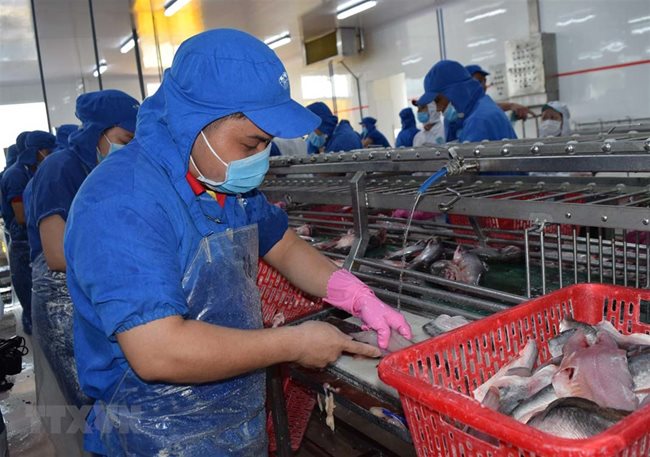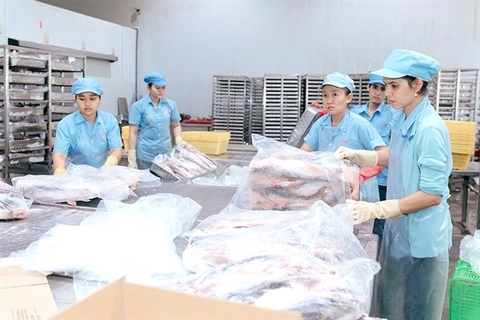 |
| Cold storage availability in HCM City is shrinking as goods pile up due to lack of demand due to the Covid pandemic. VNA/VNS Photo |
Nguyen Thanh Khue, director of a food import company in the city, said: "Goods cannot be exported, imported goods cannot be sold because people limit spending, and so inventories continue to increase. Many enterprises that plan to import have to stop because there is no storage space.”
The price of renting cold storage in city is US$0.8-1 per tonne per day. But since investing in cold storage is very expensive, enterprises mainly rent space, he said.
General Secretary of the Vietnam Association of Seafood Exporters and Producers (VASEP), Truong Dinh Hoe, said seafood companies face a severe shortage of cold storage space, forcing them to cut purchases of fresh produce.
It would be difficult for Vietnam to find new markets after the pandemic, he said.
VASEP has asked the Ministry of Agriculture and Rural Development for policy support to help companies build their own cold storage facilities with a minimum capacity of 5,000 pallets including long-term loans without interest for the first two years and a 50 per cent rate cut for the next four and a 50 per cent cut corporate income tax for the first two years for cold storage businesses.
The domestic market too needs cold storage for the distribution of foods, and this demand is increasing with the development of modern retail, it said.
"Seafood processing factories now have cold storage facilities in place but their capacity is small and only meets a part of demand, and the rest must be outsourced. If their storage capacity is larger, businesses can buy more from farmers.”
Real estate research firm CBRE Vietnam told the media that the lack of cold storage units was an opportunity for the cold storage sector. The growth of online sales and multi-channel retail could be an advantage for firms that have cold storage units near cities.
Last month ABA Cooltrans, Vietnam’s leading cold chain logistics provider, inaugurated a new refrigerated distribution centre at the Linh Trung II Export Processing Zone in HCM City’s Thu Duc District.
It is the company’s third distribution centre after one more in HCM City and another in Hanoi. It increases the company's total area to around 5,000 square metres and capacity to 8,000 tonnes.
With its strategic location, the new centre, which cost VND250 billion ($10.76 million), is expected to meet ABA customers’ expanding storage, distribution and delivery needs for frozen and fresh foods in HCM City and other cities in the south-east.
According to a report by FiinGroup, an integrated service provider of financial data, business information, industry research, and other services, Vietnam’s total cold storage capacity stood at 600,234 pallets in 2018.
It said due to rising demand for cold storage services, many providers are expected to expand.
Ken Research, a global publisher of market intelligence, said in 2016-21 Vietnam’s cold chain industry achieved estimated CAGR of 10.4 per cent thanks to its growing number of supermarkets and seafood exporters.
It estimated the market to grow to $1.8 billion by next year. VNS

VASEP decries taxes on semi-processed and processed seafood
Tax agencies have slapped many firms with a corporate income tax on semi-processed seafood products at 20%, while their products for exports or domestic consumption that are mainly processed,

Cold storage demand surges during COVID-19
Demand for cold storage is increasing due to the lower consumption of food during the COVID-19 pandemic.